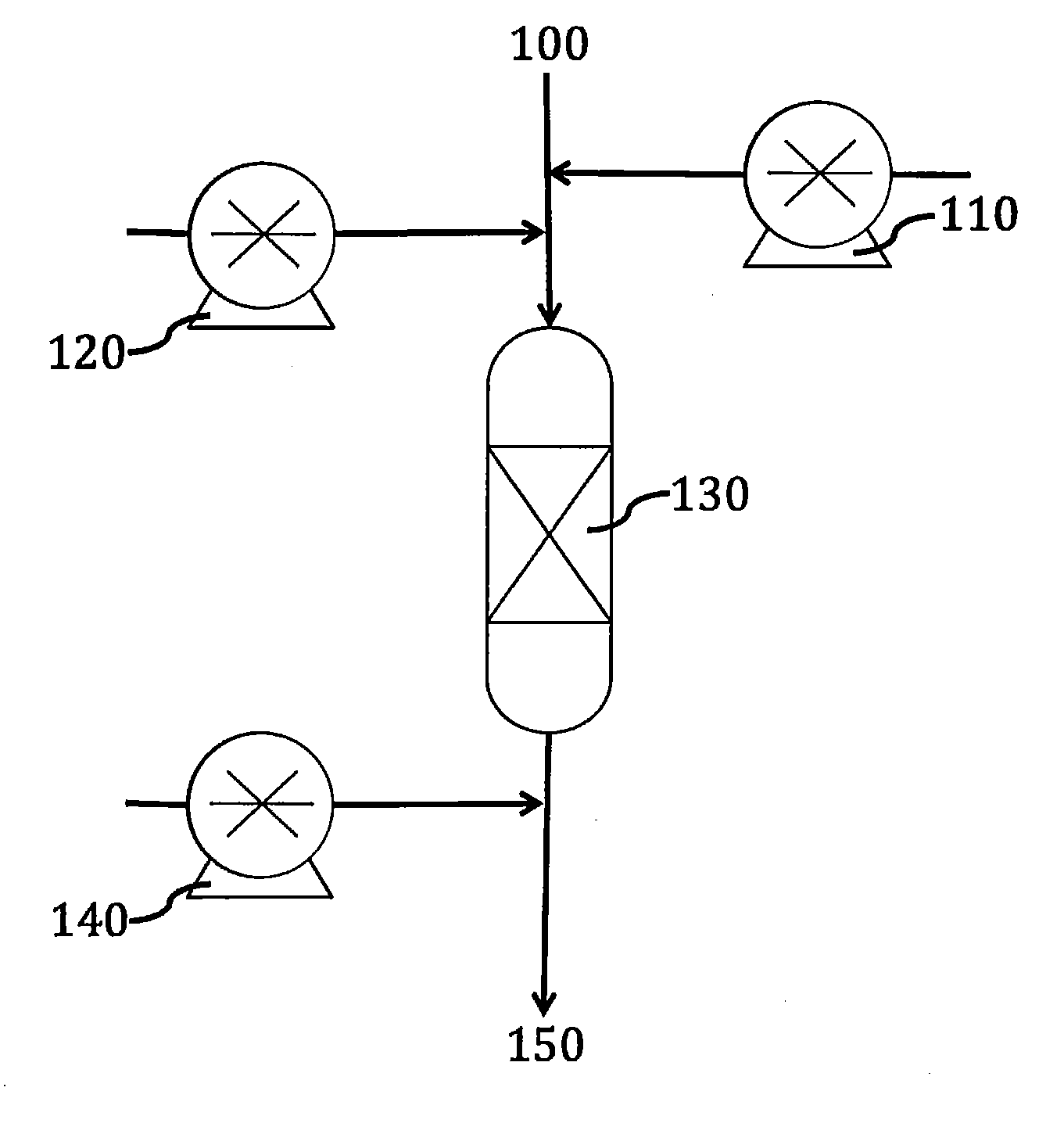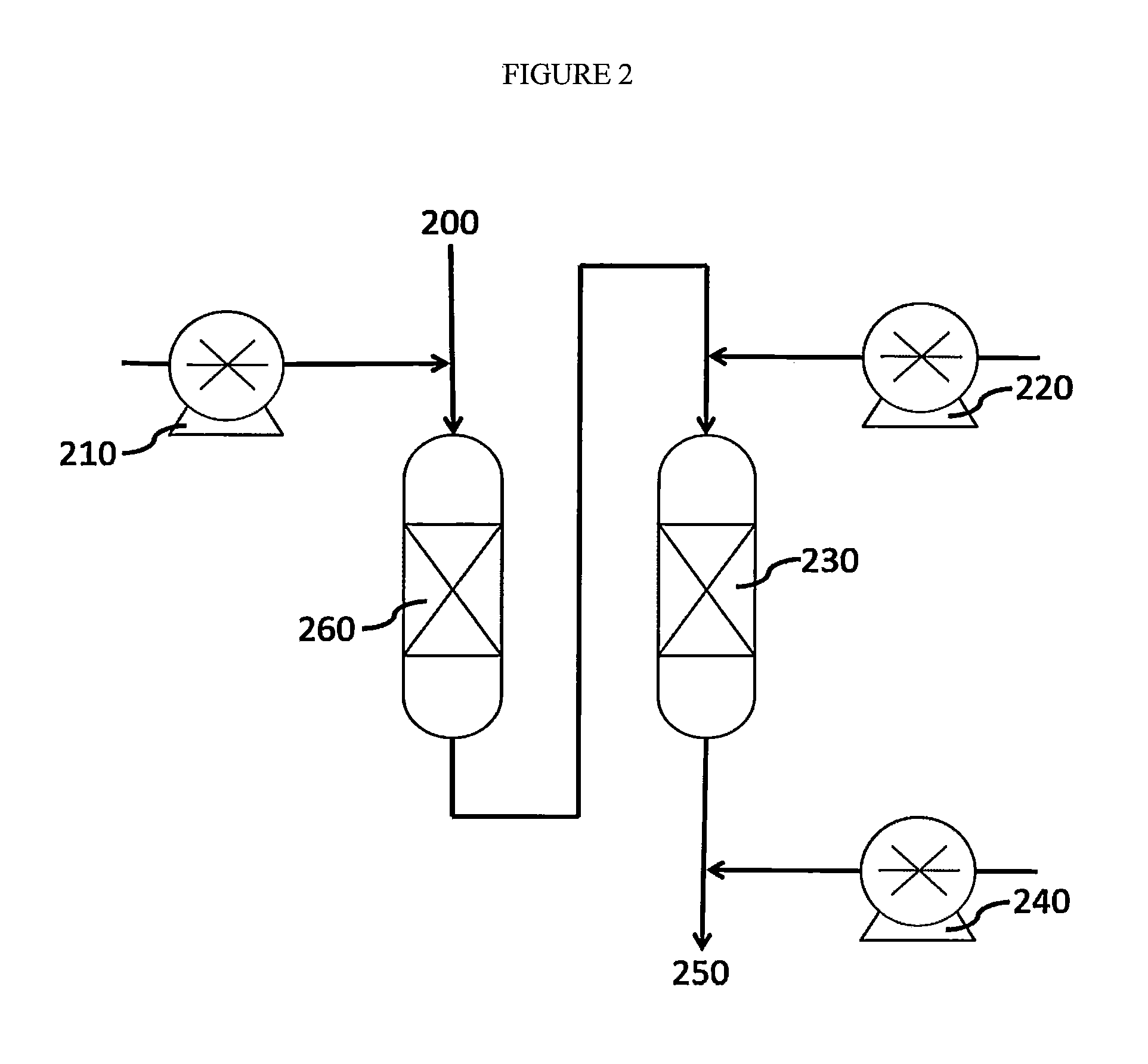Method for removing selenium from water
a technology of selenium removal and water, applied in water treatment multi-stage treatment, water treatment nature of treatment water, separation process, etc., can solve the problems of not effectively removing selenium, 5000 g per day limit is too generous, and 5 mg (5000 g) per day can be lethal, etc., to achieve easy implementation and integration, low cost, and increase particle size
- Summary
- Abstract
- Description
- Claims
- Application Information
AI Technical Summary
Benefits of technology
Problems solved by technology
Method used
Image
Examples
example 1
Removal of Selenite from Aqueous Influent
[0059]Oxidized selenium compounds, such as selenite, are very poisonous and must be removed from wastewater. This example, and those that follow, provide simple, effective, continuous flow method to remove selenite from wastewater, producing purified water with very low concentrations of selenium compounds.
[0060]Referring to FIG. 1, aqueous influent 100 containing selenite is reacted with acid 110, for example sulfuric acid, to reduce the pH to about 2.5. The influent is also warmed to about 158° F. (70° C.). Then, thiosulfate solution 120 is injected to reduce the selenite to Se0. The Se0 is sorbed in sorbent bed 130 comprising activated carbon. The Se0 is adsorbed or absorbed whether precipitated, suspended or dissolved. Base 140 is injected into the aqueous influent, producing a neutralized effluent 150 with a low content of selenium species.
example 2
1-Bed Selenoyanate-Selenite Removal
[0061]In addition to selenite, selenocyante is also a selenium ion common to wastewater. Selenocyanate can be oxidized to selenite, and the selenite reduced to Se0, and sorbed from solution.
[0062]Referring to FIG. 1, an aqueous influent 100 containing selenite and selenocyante is sparged with oxygen, reacted with acid 110 to reduce the pH to about 2.5, warmed to about 158° F. (70° C.). Thiosulfate solution 120 is injected into the influent to reduce the selenite to Se0. The influent flows through sorbent bed 130 comprising activated carbon. On the sorbent bed, selenocyanate is oxidized to selenite, which in turn is reduced to Se0 by excess thiosulfate in solution. Finally, Se0, generated from the selenocyanate and from the original selenite, is adsorbed in the sorbent bed 130. At the end, base 140 is injected into the aqueous influent, producing a neutralized effluent 150 with a low content of selenium species. The influent can be sparged with oxyg...
example 3
2-Bed Removal of Selenocyanate / Selenite
[0063]To remove both selenocyanate and selenite from the same influent, two sorbent beds can be used, one specific to selenocyanate adsorption, and a second for adsorption of Se0 produced from selenite reduction.
[0064]Referring to FIG. 2, an influent water stream 200 containing selenite and selenocyanate is reacted with acid 210 to reduce pH and warmed to about 158° F. (70° C.). The influent is passed through a first sorbent bed 260 to remove selenocyanate. Thiosulfate 220 is injected into the influent of the second bed to reduce selenite to Se0. The Se0 is adsorbed to a second sorbent bed 230 comprising activated carbon. Base 240 is injected into the influent, producing neutralized effluent 250 with low selenium compound content.
[0065]In an alternative arrangement, referring to FIG. 3, the aqueous influent 300 is sparged with oxygen, and passed through a first bed 360 comprising activated carbon. Here, the selenocyanate is oxidized to selenite...
PUM
| Property | Measurement | Unit |
|---|---|---|
| Temperature | aaaaa | aaaaa |
| Solubility (mass) | aaaaa | aaaaa |
Abstract
Description
Claims
Application Information
 Login to View More
Login to View More - R&D
- Intellectual Property
- Life Sciences
- Materials
- Tech Scout
- Unparalleled Data Quality
- Higher Quality Content
- 60% Fewer Hallucinations
Browse by: Latest US Patents, China's latest patents, Technical Efficacy Thesaurus, Application Domain, Technology Topic, Popular Technical Reports.
© 2025 PatSnap. All rights reserved.Legal|Privacy policy|Modern Slavery Act Transparency Statement|Sitemap|About US| Contact US: help@patsnap.com



